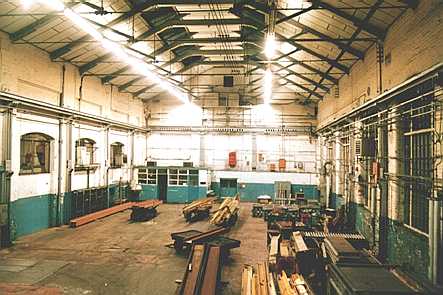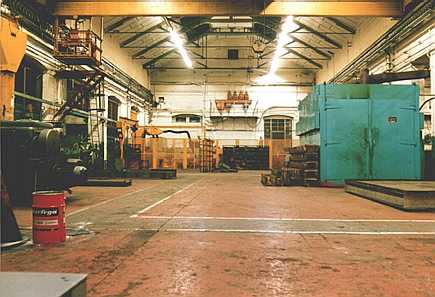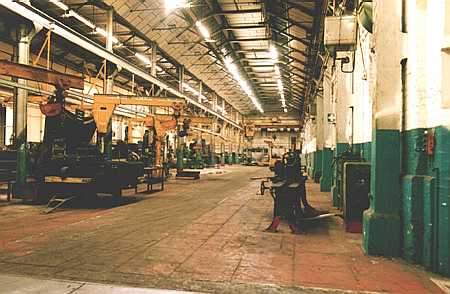
Other Shops.
At the height of the Loco Works days virtually everything was repaired or manufactured in house. As components were removed from locomotives they were suitably labelled (which locomotive the part was from) and sent to the relevant shop for repair or overhaul. The diesel engines complete with the electrical generator set would go to 9 shop on a huge rail borne transporter. Here the generator would be removed and sent to generator shop for stripping whilst the engine remained in 9 shop for repair/overhaul. New coils were made in 4 shop, also traction motors and other electrical equipment was dealt with in a number of 4 shop's different departments. The traction motors were delivered from bogie shop after their removal from the bogies. Any plates were manufactured in 18 shop although this was rarely called for on overhaul or casual work, any welding would be carried out by men from 18 shop with portable welding machines.
Radiators, steam heat generators and locomotive cabs would go to the cab shop. Interestingly the back up for the works heating system consisted of a number of Stones boilers of the type fitted to classes 25 and 45 which were sited at various locations around the works.

Above is the Traction Motor shop "Short Bay" seen after its closure. Here traction motors were reassembled after the various components had been repaired. The works maintenance department once occupied this bay. On the extreme left of the picture is a pillar which was part of the archway into part of the auxiliary machine repair shop (below). Here traction motors were stripped and other auxiliary machinery repaired. In the background on the left is a fenced off area. This was where repaired traction motors were tested. They were coupled to and driven by Crompton Parkinson motors of the type fitted to class 45s. The overhead crane is of Midland Railway manufacture and was built in the works in the early 1900s! The large blue device on the right is an oven used for heat treatment on motor armatures.

Below and accessed from the right of the above view is the traction motor and auxiliary machine stripping bay. These buildings which were situated on the 'bottom yard' have now all been flattened.
